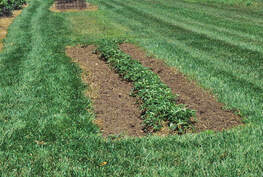 Most garden soils in Kansas have adequate levels of all nutrients other than nitrogen IF the area has been fertilized in the past. However, it is recommended that a soil test be done to be sure of the nutrient needs of your fruit planting. If the soil test recommends phosphorus and potassium, use a 10-10-10 fertilizer or 12-12-12 instead of what is recommended below but triple the rate. For example, instead of ½ cup per 10 feet of row, use 1.5 cups per 10 feet of row. Strawberries (June-Bearing): June-bearing strawberries are not fertilized in early spring as this can make the berries soft and more prone to rot. Fertilize at renovation and again in late August to early September. In most cases, strawberries need primarily nitrogen, so the recommendations are for a high nitrogen fertilizer such as a 27-3-3, 29-5-4, 30-3-3 or something similar. Though recommended for lawns, these fertilizers will also work well for strawberries as long as they do not contain weed killers or crabgrass preventers. Apply ½ cup for every 10 feet of row. Note: For more information on renovating strawberries, see page four at http://www.bookstore.ksre.ksu.edu/pubs/mf598.pdf Strawberries (Everbearing or Day-Neutral): Fertilize in the spring as growth starts and again in early August. Use the rates recommended for June-bearing strawberries. Everbearing (dayneutral) strawberries are not renovated. Brambles (Blackberries and Raspberries): In most cases, brambles need primarily nitrogen, so use a high nitrogen fertilizer such as a 27-3-3, 29-5-4, 30-3-3 or something similar unless a soil test directs otherwise. Though recommended for lawns, these fertilizers will also work well as long as they do not contain weed killers or crabgrass preventers. Apply ½ cup for every 10 feet of row. Fertilize in spring as growth begins. (Ward Upham) 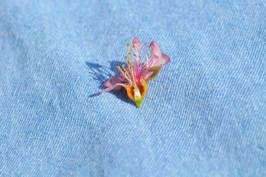 If your peach trees were in bloom during one of our earlier cold snaps, then it will be doubtful that you will have a peach crop this year. I know the there won’t be much of a peach crop in the Wichita area and probably not many places in southern Kansas. The peaches bloomed earlier than in the rest of the state and the fruit buds were killed by frost. However, the peaches near Manhattan may bear a crop. Low temperatures this past weekend did kill any blossoms that were open but those that were still closed made it through. Actually 28 degrees is the temperature at which we start losing peach buds if they are in full bloom. Unopened buds are more cold tolerant. So how can you tell if your peach buds are still alive? To check for low temperature injury to fruit buds or blossoms, use a sharp knife or razor blade and cut the bud in half longitudinally. If the area in the center is white to cream color and the style of the pistil is has not darkened then no damage has been done. But if the center in several buds or blossoms is dark brown or black, it has been killed. (Ward Upham) 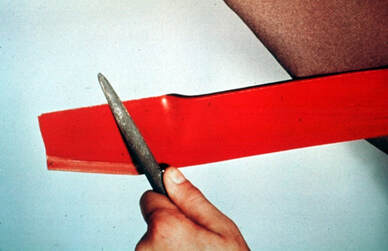 Lawn-mowing season is here. Remember that dull blades give the lawn a whitish cast. A dull blade does not cut cleanly but rather shreds the ends of the leaf blades. The shredded ends dry out, giving the lawn that whitish look. A sharp mower blade is even more important when the turf starts putting up seed heads next month. The seed head stems are much tougher than the grass blades and more likely to shred. Under normal use, mower blades should be sharpened about every 10 hours of use. (Ward Upham) 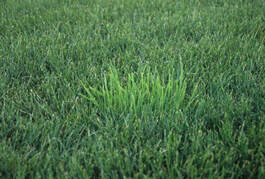 Orchardgrass often infests tall fescue lawns. Unfortunately, orchardgrass is lighter green and faster growing than tall fescue, so it is very visible. Homeowners complain of the light green tufts of grass wherever this weed has become established. Even worse, there are no herbicides that will kill the orchard grass without also killing the turf. About the only good thing about orchardgrass is that it is a bunch grass and does not spread. Orchardgrass often comes in as a contaminant in grass seed, especially K-31 tall fescue. Buying good grass seed is the first line of defense against this weed. Orchardgrass is a pasture grass and therefore is not found in the “weed seed” portion of the seed label. Rather, orchard- grass will be listed as “other crop seed.” Try to buy grass seed that has 0.0% “other crop seed.” Control options are few and painful. Use glyphosate (Roundup, Killzall Weed and Grass Killer, Kleeraway Systemic Weed and Grass Killer and others) to spot spray orchardgrass clumps. Any lawn grasses you hit will be killed, so keep the spots sprayed as small as possible. Wait until the spots have turned brown and then cut out the clumps and replace with a small piece of sod. Large numbers of orchardgrass clumps may mean it is more practical to kill the entire lawn and start over. This should be done in the fall rather than now. For information on identification of orchardgrass, including images, go to: http://kswildflower.org/grass_details.php?grassID=15 (Ward Upham) 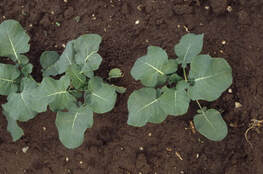 If you planted cole crops such as cabbage, broccoli and cauliflower earlier this spring and made it through our earlier cold snaps, they will need a little fertilizer boost. These plants need to mature before summer heat arrives, so they must grow quickly while the weather is cool. A sidedressing of fertilizer about 3 weeks after transplanting helps plants continue to grow rapidly. Use fertilizers high in nitrogen for sidedressing such as nitrate of soda or blood meal at the rate of 2 pounds per 100 feet of row. You may also use lawn fertilizers that have close to 30 percent nitrogen such as a 30-3-4 or 29-5-4 but the rate should be cut in half to 1 pound per 100 feet of row. Do not use lawn fertilizers that have weed killers or preventers. Fertilizer must be watered in if timely rains don't do that job for you. We have a sheet available that gives recommendations on how to sidedress specific vegetable crops. It can be found at: https://tinyurl.com/j2ggaa6 (Ward Upham) 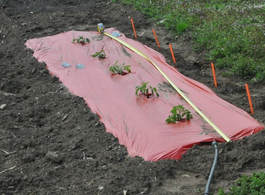 Plastic mulches have long been known to provide advantages for the vegetable grower including earlier fruiting, increased yields and weed control. More recently advantages have been noted for colored mulches over the more traditional black plastic mulch. With tomatoes, the color of choice has been red. Though normally there is an increase in production of marketable fruit with red mulch over black mulch, the amount of the increase varies with the type of year we have. There may be no increase during years of near-perfect weather or up to a 20% increase with less favorable growing conditions. A good average expected increase is about 12%. So, how do you apply plastic mulch? Commercial growers have a mulch-laying machine that applies the trickle irrigation line and the mulch in one operation. Home gardeners must do this by hand. The first step after soil preparation is to place a trickle line near the center of where the mulch will lay as the plastic will prevent rainwater or overhead irrigation from reaching the plants. Then construct trenches for the outer 6 inches of the plastic mulch. This allows the center of the bed to be undisturbed with the edges of the mulch draping down into the trench. Fill the trenches to cover the edges of the mulch. This will prevent wind from catching and blowing the mulch. If the soil has been tilled, a hoe is all that is needed to prepare the trenches. (Ward Upham) 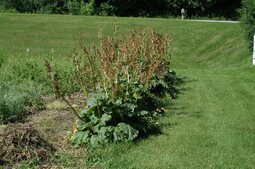 Rhubarb, like asparagus, is a perennial vegetable. It is harvested for the leaf stem, which is also called a petiole. Some years rhubarb will produce large, hollow-stemmed seedstalks that arise from the center of the plant. These should be broken or cut out as they appear so that energy will go into plant vigor rather than seed production. It will take several weeks for all the seedstalks to appear so be vigilant in removing them. Newer varieties of rhubarb are selected for vigor, bright red-colored stalks and less of a tendency to produce seedstalks than the older types. (Ward Upham) Both termites and ants are able to swarm and may have wings during part of their lives. Since these insects are close to the same size, people often misidentify flying ants as termites. Since flying ants do not attack wooden structures like termites, it is helpful to be able to tell the difference.
Fortunately, there are several differences that can easily distinguish the two. For example, ants have a thin waist; the waist of a termite is thick. Also, ants' antennae are elbowed, while termites' are curved. Thirdly, termites have two pairs of wings that are of equal length. Ants also have two pairs of wings, but theirs are of unequal length. Homeowners who find signs of termite activity should shop for a reputable pest control firm. (Ward Upham) 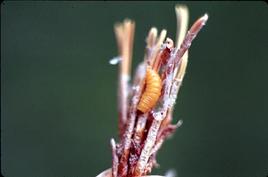 We received the following note from Matthew McKernan, our Horticulture Agent in Sedgwick County (Wichita). “A couple of my Christmas Tree growers have continued to trap and monitor Pine Tip Moth numbers again this spring. They started trapping in Mid-March, but due to the weather, insect activity has slowed dramatically until recently. It appears the peak emergence for the 1st generation of Pine Tip Moth was on April 17, 2018 for the Sedgwick County area. We had a large number of moths on that day, and very few since then, so it appears that April 17th was probably the peak of the 1st generation. At this point our growers plan to spray either Wednesday or Thursday of next week.” Editor’s note: This would be April 25 or 26. (Ward Upham) |
AuthorsCynthia Domenghini runs the Horticulture Response Center in the Department of Horticulture and Natural Resources at Kansas State University. Other contributors include K-State Extension Specialists. Archives
March 2024
Categories
All
|
| K-State Research and Extension Horticulture Newsletter |
|
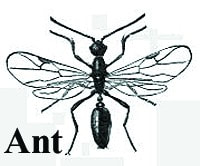
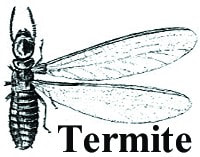
 RSS Feed
RSS Feed
